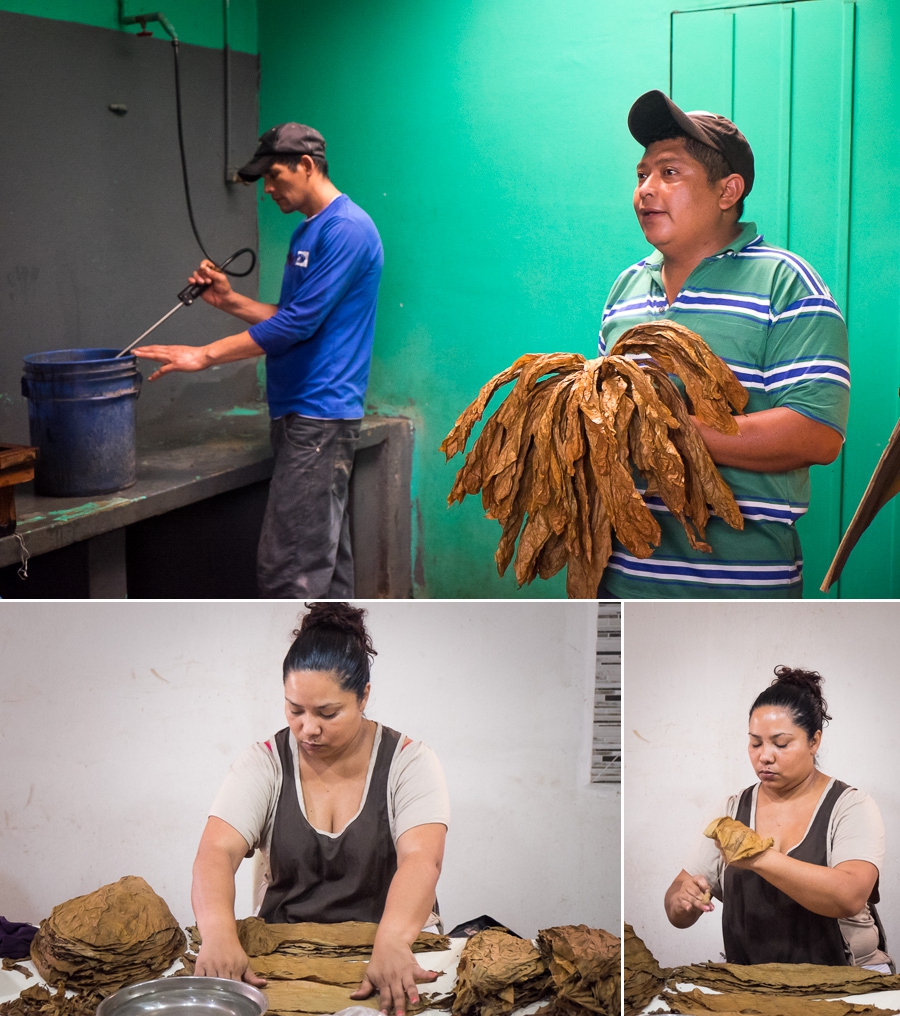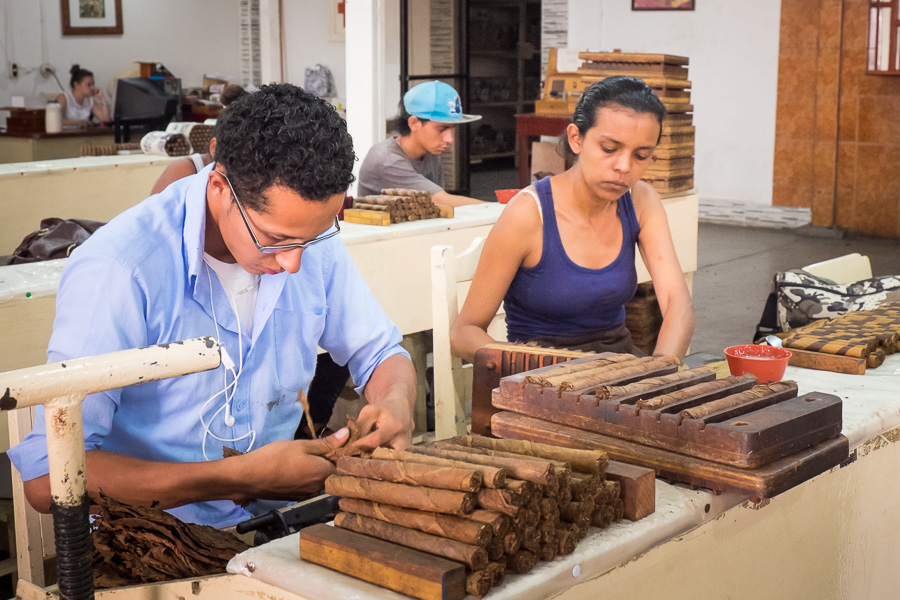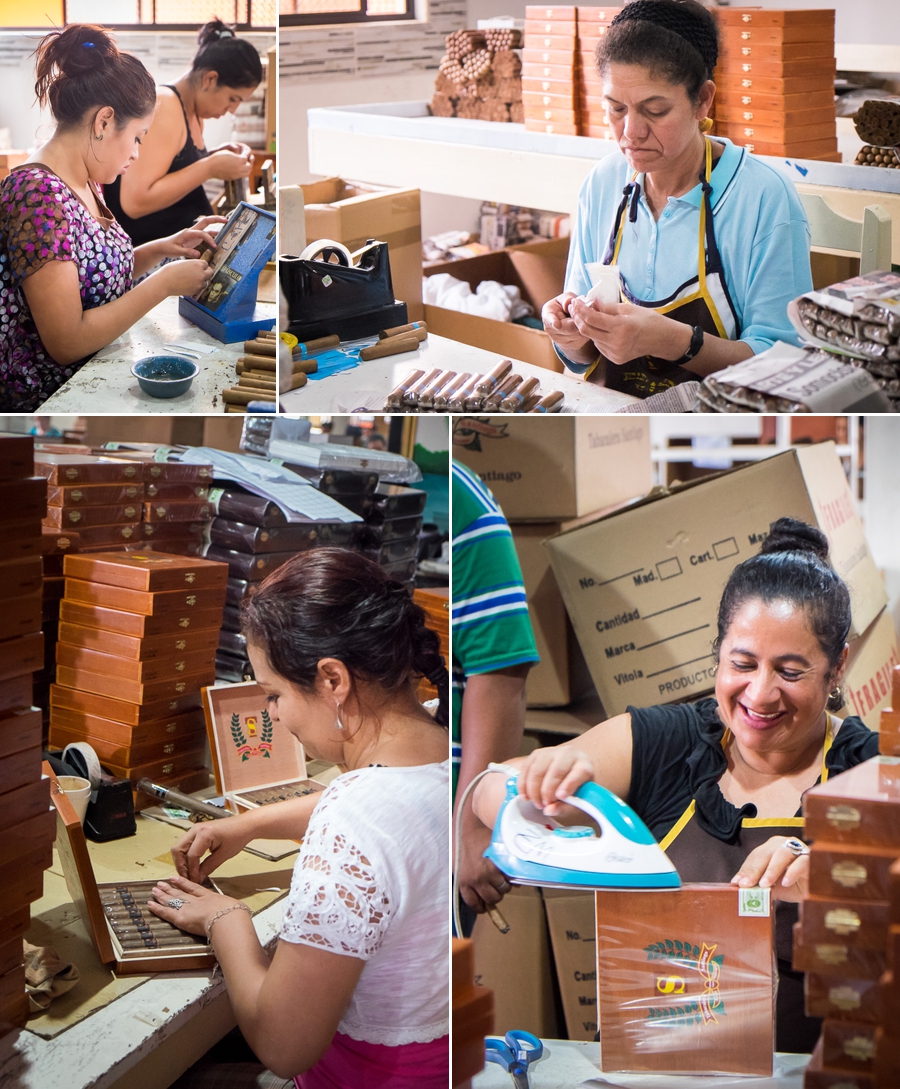One of Estelí’s claims to fame is that it is the largest cigar producer outside of Cuba. Cigar manufacturing is the biggest employer in the region and the surroundings are filled with tobacco plantations and really cool looking drying and fermenting sheds that are absolutely enormous! So, when I found myself with a free day in Estelí, I decided on a whim to go along on the Cigar Factory tour offered by Treehuggers.
Would have loved to go visit the tobacco farms themselves and see inside those impressively large (and rather beautiful) wooden sheds, but all the tours on offer focused on the actual creation of the cigar itself – the post-processing part if you will. Ours was to the Tabacalera Santiago (which produces more than 30,000 cigars per day) and Juan was our guide.

First stop was the workshop where they made the wooden boxes the final cigars are packed in. With more than 60 different types of cigar manufactured here, each with a distinct packing requirement, the extended workshop was quite busy and included the carpenters, a machine that enabled gold embossing, a laquering area, and an area where the each of the marks (some of which included 3 or 4 colours) were applied to the boxes with enormous care.

From there we headed to a relatively small room where pallets of tobacco leaves were fermenting. Juan explained that the fermentation process takes about a year, in which the temperature of the tobacco must be carefully monitored and the layers rotated constantly to ensure the tobacco ferments and doesn’t go mouldy. Given the size of the room, I asked how they maintained the supply of tobacco to the factory, which is when he explained that the majority of the tobacco is actually dried and fermented on the tobacco farm itself. Very little is actually done at the factory. Even more reason to want to peek inside those beautiful, long sheds I could see around the outskirts of Estelí, particularly as I wondered whether it would be easier to breathe in them than in this small room! They looked quite airy, this room was absolutely choked with the smell of tobacco fermenting – very hard to breathe!

The next step in the process, once fermentation was finished, was to wet the tobacco leaf again to make it pliable. It was then passed to a bunch of ladies whose job it was to remove the centre vein of the tobacco leaf. These ladies (obviously) had a lot of experience in removing this cleanly – they would wrap the leaf around their hand and extracted the vein in one very swift movement. I wonder how many leaves don’t survive this process? All of them made it as far as I could tell while I watched.

The leaves are then sorted according to colour and quality. Some become “fillers” (the leaves in the centre of the cigar), and are passed to the main production room with a particular “blend” that defines the flavour of the cigar. Some become “binders”, that hold the filler leaves together into their cylindrical shape, and some become “wrappers” that make up the nice-looking outer layer of the cigar.
The very highly trained staff (it takes about a year to become a proficient roller) work in pairs and at each station to produce the cigars.

First of all, the filler leaves are gathered up and formed into a rough cigar shape, taking care that the leaves are laid uniformly. This bunch is then tightly wrapped in the binder leaf and pressed into a hardwood mould, which is then compressed to give the cigar (which is open at both ends) its final shape.
[evp_embed_video url=”http://lisagermany.com/wp-content/uploads/2016/05/cigar-rolling.mp4″]
Once the cigars have been compressed, the other person takes over to apply the wrapper. They then cut a little cap from the remainder of the wrapper leaf and apply to the end of the cigar to finish off.

The final stage of the process is the packing of the cigars. They are first inspected to ensure their quality and then sent off to ladies who apply the label (usually a strip of colour) to the cigar, pack it in individual wrappers, pack them into the boxes that we saw being made at the start, and then wrap the boxes in plastic. Yes, this last is being done with an iron!

The last part of the tour was to visit the factory’s shop where you could buy cigars for US$1 or US$2 each – which, according to those in the know, is incredibly cheap. Given I don’t smoke, didn’t know anyone who would want some cigars and have a long way to go in my trip, I declined.
Information
The Cigar Factory tour through Treehuggers costs US$8 per person which includes the taxi there and back, the guided tour (in spanish) and the opportunity to smoke a cigar while on the tour. The tour lasts about 1.5-2 hours depending on how many questions the group asks (I was pretty much the only one asking questions from our group) and how much time people spend in the shop.
I understand that you can actually do a tour of the factory independently and for free, provided that you purchase cigars at the end (minimum purchase of cigars is US$5).